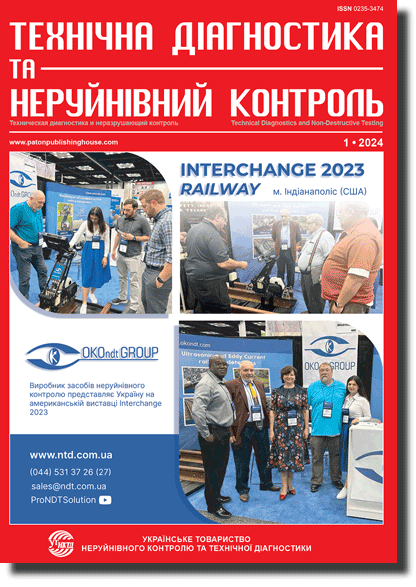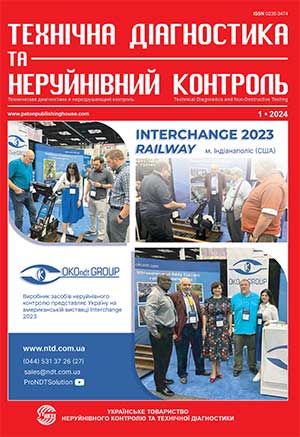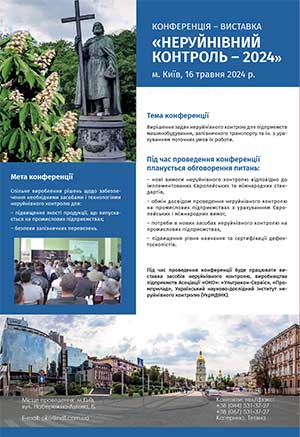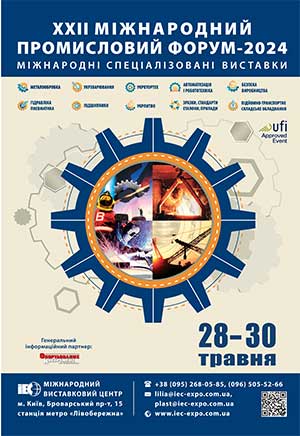| 2024 №01 (01) |
DOI of Article 10.37434/tdnk2024.01.02 |
2024 №01 (03) |
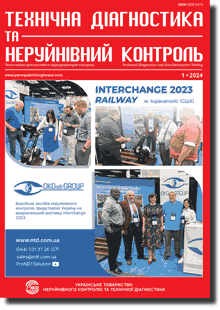
"Tekhnichna Diahnostyka ta Neruinivnyi Kontrol" (Technical Diagnostics and Non-Destructive Testing) #1, 2024, pp. 8-13
Numerical analysis of the regularities of the infuence of pipe steel degradation on the reliability of corroded main gas pipelines used for transportation of gas-hydrogen mixtures
O.S. Milenin, O.A. Velykoivanenko, G.P. Rozynka, N.I. Pivtorak
E.O. Paton Electric Welding Institute of the NAS of Ukraine 11 Kazymyr Malevych Str., 03150, Kyiv, Ukraine. E-mail: office@paton.kiev.uaTransportation of mixtures of natural gas and green hydrogen is one of the promising ways to use the local gas-transportation system under the conditions of a rapid transition to a sustainable economy. For safe operation of the available main gas pipelines at transportation of gas-hydrogen mixtures of different compositions, it is necessary to take into account the negative influence of hydrogen on the mechanical properties of pipe metal, in particular at evaluation of their technical condition by the results of flaw detection. In this work, the principles of safe operation of pipelines with detected defects of local corrosion loss of metal were studied. For this purpose a numerical procedure was developed for assessment of brittle strength based on finite-element modeling of the stressed state and brittle-ductile fracture criteria. It is shown that under the conditions of static loading degradation of brittle fracture resistance of pipeline metal with the detected defect of local metal loss is relatively small, and it can be compensated by a change in service load. Under the conditions of cyclic loading by internal pressure the regularities of lowering of the load-carrying capacity of a corroded pipeline were demonstrated, depending on the actual brittle fracture resistance of the pipe steel. 18 Ref., 6 Fig.
Keywords: gas-hydrogen mixtures, main pipeline, local metal loss due to corrosion, hydrogen degradation, technical condition, brittle fracture, cyclic loading
Received: 09.02.2024
Received in revised form: 01.03.2024
Accepted: 22.03.2024
References
1. Aravindan, M., Praveen Kuma, G. (2023) Hydrogen towards sustainable transition: A review of production, economic, environmental impact and scaling factors. Results in Engineering, 20, 101456. https://doi.org/10.1016/j.rineng.2023.1014562. Agrawal, D., Mahajan, N., Singh, S.A., Sreedhar, I. (2024) Green hydrogen production pathways for sustainable future with net zero emissions. Fuel, 359, 130131. https://doi.org/10.1016/j.fuel.2023.130131
3. Falcone, P.M., Hiete, M., Sapio, A. (2021) Hydrogen economy and sustainable development goals: Review and policy insights. Current Opinion in Green and Sustainable Chemistry, 31, 100506. https://doi.org/10.1016/j.cogsc.2021.100506
4. Zvirko, O. (2022) Anisotropy of hydrogen embrittlement in ferrite-pearlitic steel considering operational degradation. Procedia Structural Integrity, 42, 522-528. https://doi.org/10.1016/j.prostr.2022.12.066
5. Huakun, W., Tongyao, W., Sheng, Y. et al. (2024) Ductile burst behavior of high pressure X100 steel pipe considering hydrogen damage. Int. J. of Hydrogen Energy, 58, 362-379. https://doi.org/10.1016/j.ijhydene.2024.01.106
6. Cakir Erdener, B., Sergi, B., Guerra, O.J. et al. (2023) A review of technical and regulatory limits for hydrogen blending in natural gas pipelines. Int. J. of Hydrogen Energy, 48, 14, 5595-5617. https://doi.org/10.1016/j.ijhydene.2022.10.254
7. Makhnenko, V.I., Pochinok, V.E. (2006) Strength Calculation of Welded Joints with Crack-Like Imperfections. E.O. Paton Electric Welding Institute, NASU.
8. Zengtao, C., Butcher, C. (2013) Micromechanics Modelling of Ductile Fracture. Springer Science+Business Media Dordrecht.
9. Velikoivanenko, E.A., Milenin, A.S., Rozynka, G.F., Pivtorak, N.I. (2016) Simulation of processes of initiation and propagation of subcritical damage of metal in welded pipeline elements at low-cycle loading. Tekh. Diagnost. i Nerazrush. Kontrol, 4, 14-20 [in Russian]. https://doi.org/10.15407/tdnk2016.04.03
10. Velikoivanenko, E., Milenin, A., Popov, A. et al. (2019) Methods of numerical forecasting of the working performance of welded structures on computers of hybrid architecture. Cybernetics and Systems Analysis, 55, 1, 117-127. https://doi.org/10.1007/s10559-019-00117-8
11. Makhnenko, V.I. (2006) Safe service life of welded joints and assemblies of modern structures. Kyiv, Naukova Dumka [in Russian].
12. Makhnenko, V.I., Milenin, A.S., Semyonov, A.P. (2007) Mathematical modelling of thermal-deformation processes in braze-welding of butt joints of the titanium-aluminium type. The Paton Welding J., 11, 5-9.
13. (2013) BS 7910:2013. Guide to methods for assessing the acceptability of flaws in metallic structures. BSI Standards Publication.
14. (2016) API 579-1/ASME FFS-1. Fitness-For-Service 2016. Washington, American Petroleum Institute, American Society of Mechanical Engineers.
15. Zhao, X.-L., Packer, J.A. (2000) Recommended fatigue design procedure for welded hollow section joints. IIW doc. XIII-1772-99/XV-1021-99. Abington Publ., Abington Cambridge UK. https://doi.org/10.1533/9780857093127
16. Smiyan, O.D. (2018) Hydrogen and metal fracture of longterm operation objects. Kyiv, Naukova Dumka [in Ukrainian].
17. Meng, B., Gu, C.H., Zhang, L. et al. (2017) Hydrogen effects on X80 pipeline steel in high-pressure natural gas/hydrogen mixtures. Int. J. of Hydrogen Energy, 42, 11, 7404-7412. https://doi.org/10.1016/j.ijhydene.2016.05.145
18. (2008) DSTU N B.2.3-21:2008. Directive. Determination of residual strength of main pipelines with defects. Kyiv, Minregionbud Ukrainy [in Ukrainian].
Advertising in this issue:
The cost of subscription/purchase order journals or individual articles
| Journal/Currency | Annual Set | 1 issue printed |
1 issue |
one article |
| TPWJ/USD | 384 $ | 32 $ | 26 $ | 13 $ |
| TPWJ/EUR | 348 € | 29 € | 24 € | 12 € |
| TPWJ/UAH | 7200 UAH | 600 UAH | 600 UAH | 280 UAH |
| AS/UAH | 1800 UAH | 300 UAH | 300 UAH | 150 UAH |
| AS/USD | 192 $ | 32 $ | 26 $ | 13 $ |
| AS/EUR | 180 € | 30 € | 25 € | 12 € |
| SEM/UAH | 1200 UAH | 300 UAH | 300 UAH | 150 UAH |
| SEM/USD | 128 $ | 32 $ | 26 $ | 13 $ |
| SEM/EUR | 120 € | 30 € | 25 € | 12 € |
| TDNK/UAH | 1200 UAH | 300 UAH | 300 UAH | 150 UAH |
| TDNK/USD | 128 $ | 32 $ | 26 $ | 13 $ |
| TDNK/EUR | 120 € | 30 € | 25 € | 15 € |
AS = «Automatic Welding» - 6 issues per year;
TPWJ = «PATON WELDING JOURNAL» - 12 issues per year;
SEM = «Electrometallurgy Today» - 4 issues per year;
TDNK = «Technical Diagnostics and Non-Destructive Testing» - 4 issues per year.





